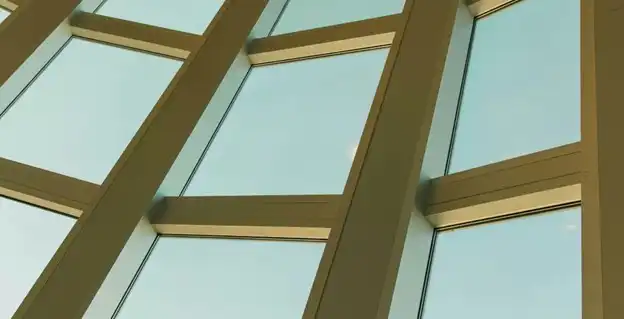Integrating soundscapes in modern architectural design, Building walling material, Brickwork advice
Integrating Soundscapes in Modern Architectural Design
20 November 2024
Designing spaces that engage all senses has become a key focus in modern architecture. Among these, sound plays a pivotal role in shaping our experiences within different environments. Integrating soundscapes thoughtfully can transform ordinary buildings into immersive sanctuaries of calm, creativity, and inspiration.
This guide will explore five innovative ways to weave sound into your architectural projects, from incorporating nature-inspired audio elements to creating personalized acoustic zones.
Whether you’re working on an office space, public area, or residential project, these strategies aim to enhance the quality and ambiance of your designs through the power of sound.
5 Ways to Integrate Soundscapes in Modern Architectural Design
1. Use Nature-Inspired Sounds
Integrating nature-inspired sounds into your architectural design can significantly enhance the overall atmosphere and well-being of a space. Imagine walking into a lobby where you hear the gentle rustle of leaves or the trickling of water from a hidden stream.
These subtle yet impactful soundscapes create a calming, serene environment, fostering relaxation and reducing stress for anyone who enters. Technologies today allow these sounds to be seamlessly integrated through discreet speakers or interactive installations.
Platforms like DistroKid allow you to distribute songs on Spotify more easily, opening up possibilities for custom nature-inspired tracks that can be continually updated or modified to suit different moods or times of day. This natural audio infusion enriches any modern architectural design with immersive sensory experiences.
2. Sound-Absorbing Materials
Incorporating sound-absorbing materials into your architectural design can greatly enhance the acoustic quality of a space while reducing unwanted noise. Materials like acoustic panels, specialized ceiling tiles, or even soft furnishings like carpets and curtains serve dual purposes: they absorb ambient noise and improve the clarity of intentional soundscapes you’ve integrated.
This is particularly important in spaces such as offices, theaters, or residential buildings where noise control is crucial to comfort and functionality.
These materials come in various textures, colors, and designs so they can blend with your vision without compromising on style. By thoughtfully placing sound-absorbing elements, you create a harmonious environment that better supports the intended ambiance of any room.
3. Interactive Sound Installations
Interactive sound installations add a dynamic layer to architectural design, turning spaces into interactive environments. These installations respond to movement, touch, or other forms of interaction from occupants, creating unique auditory experiences.
Just think of a gallery where each step triggers a different note or a public space where people can engage with sound sculptures that react to their presence. This not only stimulates the senses but also encourages engagement and exploration within the space.
Modern technology enables these installations to be sophisticated and unobtrusive, ensuring they enhance rather than dominate the overall aesthetic. By incorporating interactive sound elements, you transform static environments into living spaces that captivate and inspire.
4. Hidden Speakers
Incorporating hidden speakers into your architectural design allows you to deliver high-quality audio experiences without disrupting the visual harmony of a space. These speakers can be seamlessly integrated into walls, ceilings, and even furniture.
This ensures that technology remains invisible but effective. What if you could enter a room where ambient music or subtle environmental soundscapes enrich your experience without any visible source of sound? That’s what hidden speakers can provide. This approach is especially useful in hotels, restaurants, and modern homes where aesthetics are paramount.
Hidden speakers can also be zoned for different areas, allowing you to create customized auditory environments that suit specific needs or moods without compromising the design. By using hidden audio technology, you achieve a perfect balance between form and function.
5. Personalized Sound Zones
Personalized sound zones are revolutionizing the way we think about acoustic environments in modern architecture. By using advanced audio technology, specific areas within a larger space can be acoustically isolated to create distinct auditory experiences.
For instance, in an open-plan office, quiet zones can coexist alongside collaborative areas with more vibrant soundscapes. This customization allows each occupant to enjoy an environment tailored to their needs and preferences without exposing others to unwanted noise.
Customizing sound zones also benefits spaces like shopping malls and airports, where different sections require varied atmospheres—such as lounges versus shops. Achieving this balance ensures that each part of the space meets its functional and emotional goals effectively.
This is How You Can Incorporate Sound in Modern Architecture
Ready to redefine your architectural designs with the power of sound? Don’t let the auditory potential of your projects remain untapped. Start integrating these soundscape strategies today, and watch as your spaces become more immersive, engaging, and functional.
Whether it’s through nature-inspired audio, interactive installations, or personalized sound zones, there are endless possibilities to explore. Dive into the world of sonic architecture and create environments that not only look stunning but also resonate on a deeper sensory level.
Comments on this guide to Integrating soundscapes in modern architectural design article are welcome.
Brick
Brick Walls and Sound Insulation
Bricks
Can brick slips be used externally guide
2021 Brick in Architecture Awards
Building Articles
Residential Architecture
Comments / photos for the Integrating soundscapes in modern architectural design page welcome






